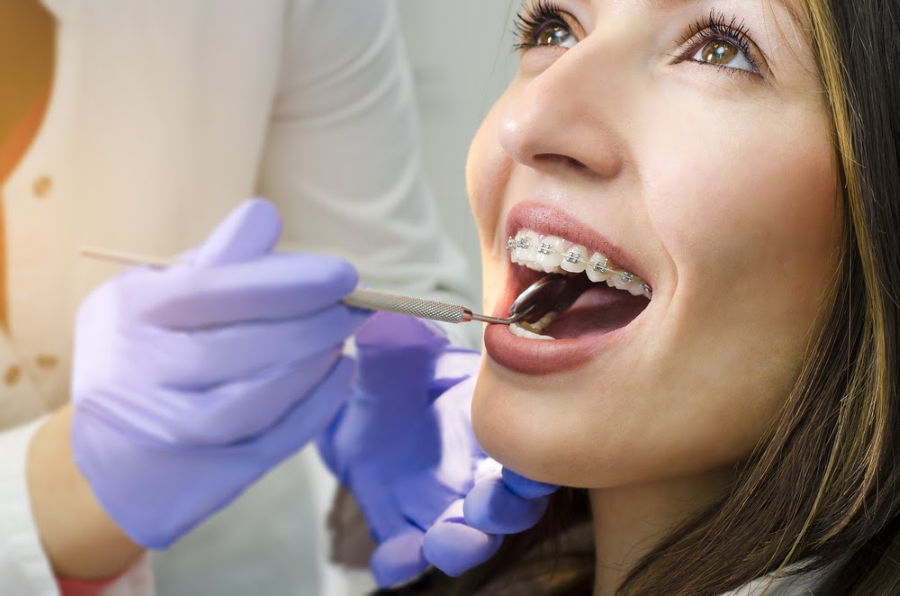The Ultimate Guide To Legacy Orthodontics
The Ultimate Guide To Legacy Orthodontics
Blog Article
Not known Details About Legacy Orthodontics
Table of ContentsThe Ultimate Guide To Legacy OrthodonticsThe Buzz on Legacy OrthodonticsLegacy Orthodontics Things To Know Before You BuyAll about Legacy OrthodonticsThe 7-Minute Rule for Legacy Orthodontics
At Advanced Orthodontics, we give patients with a all natural therapy experience. Furthermore, we offer flexible therapy timetables, adaptable settlement choices and an enjoyable, enjoyable experience. leesburg invisalign. Phone call ( 480) 357-4900 today to find out more and schedule a consultation.An orthodontist is a dental professional trained to detect, protect against, and treat teeth and jaw irregularities. They deal with existing problems and are trained to identify troubles that may develop in the future. Orthodontists function with people of all ages, from children to adults. Individuals often link a best smile with healthiness.
Malocclusion, or misaligned teeth, can bring about dental issues, consisting of dental caries, periodontal condition, and hard or painful eating. But not everyone is birthed with straight teeth. If you have a negative bite or large spaces in between your teeth, you might intend to seek advice from a dental professional focusing on orthodontic treatment.
Legacy Orthodontics for Beginners
( Picture Credit Score: DigitalVision/Getty Images) Orthodontists utilize repaired and detachable oral gadgets, like dental braces, retainers, and bands, to change the placement of teeth in your mouth. Orthodontic therapy is for dental irregularities, consisting of: Misaligned teethBite troubles, like an overbite or an underbiteCrowded teeth or teeth that are also much apartJaw misalignmentThe goal of orthodontic treatment is to improve your bite.
A healthy bite guarantees you can consume, chew, and talk correctly. While you might assume of orthodontists as generally for children or teenagers that need dental braces, they can fix oral problems at any age. Orthodontists participate in college, oral school, and orthodontic college. After college graduation, they invest 2 or 3 years in an orthodontic residency program.
All orthodontists are dental practitioners, yet not all dentists are orthodontists. Orthodontic residency programs provide intensive, focused direction for dental professionals. They concentrate on 2 areas: How to appropriately and securely move teeth How to correctly direct advancement in the teeth, jaw, and faceOnce an orthodontist has completed training, they have the option to become board accredited.
Unknown Facts About Legacy Orthodontics
Misalignment, or malocclusion, is the most typical reason individuals see an orthodontist. It is hereditary and is the outcome of size differences between the upper and reduced jaw or in between the jaw and teeth. Malocclusion leads to tooth overcrowding, an askew jaw, or uneven bite patterns. Malocclusion is normally treated with: Your orthodontist connects metal, ceramic, or plastic square bonds to your teeth.
Some individuals need a headgear to assist relocate teeth into line with stress from outside the mouth. A retainer is a personalized gadget that maintains your teeth in area.
They can produce additional room in the mouth without having to pull teeth. Orthodontists use cords, surgical screws, or plates to support your jaw bone.
You might need to see an orthodontist if you have: Crowding or not enough area for all of your teethOverbite, when your top teeth come your bottom teethUnderbite, when your base teeth are as well much forwardSpacing or concerns with gapsCrossbite, which is when your top teeth fit behind your base teeth when your mouth is closedOpen bite or an upright space between your front bottom and upper teethMisplaced midline, when the center of your base and top teeth do not align Correcting an oral malocclusion can: Make biting, eating, and talking easierImprove the symmetry of our face and your general appearanceEase discomfort from temporomandibular joint disordersSeparate your teeth and make them less complicated to cleanse, aiding stop dental cavity or dental caries It's commonly a dental practitioner who first notices misaligned teeth throughout a routine test.
Some Known Questions About Legacy Orthodontics.

Throughout your first orthodontic assessment, you'll likely have: An oral examPhotos taken of your face and smileDental X-raysPanoramic (360 level) X-rays of your face and headImpressions to produce molds of your teethThese tests will help your orthodontist understand exactly how to continue with your therapy. leesburg clear braces. An orthodontist is a dental practitioner that's had training to treat your teeth and jaw
An orthodontist is concentrated on your bite, so something like a cracked tooth would certainly be taken care of by a dental practitioner. Orthodontists are focused on your bite, or the means your teeth fit together, and the straightness of your teeth.
Ever asked yourself exactly how celebrities constantly appear to have perfectly lined up teeth? The solution usually depends on the experienced hands of an orthodontist. What specifically does an orthodontist do? Orthodontists are dental professionals who concentrate on fixing abnormalities in the teeth and jaws. Their experience goes beyond simply creating an attractive smile; it encompasses boosting your total oral health and function.
Legacy Orthodontics - Truths

While dental braces are the most generally identified orthodontic treatment, orthodontists have a varied toolkit at their disposal. The certain technique selected depends upon the extent of the case, the patient's you could try these out age, and individual preferences. These reliable dental braces make use of a system of braces bound to the teeth and attached by cords.
Clear aligners, like Invisalign, are a preferred choice for patients looking for a much more discreet therapy option. These removable trays are customized to gradually move the teeth's setting. Headgear may be utilized together with braces or aligners to apply additional targeted pressures, especially for remedying jaw inconsistencies. In situations of narrow jaws, palatal expanders can be used to create room for correct tooth placement.
Report this page